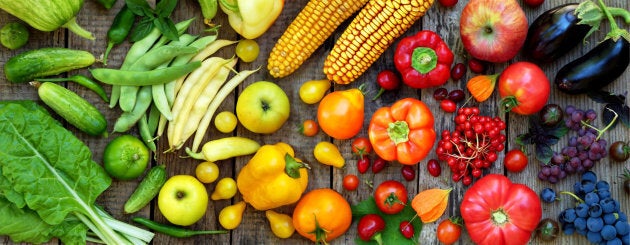According to Health Canada, breast cancer is the third most common cancer in Canada and the primary cancer affecting women in the country. The federal health organization says that one in eight women will be diagnosed with breast cancer in her lifetime, with 83 per cent of those cases occurring in women aged 50 plus.
October 1 marks the start of Breast Cancer Awareness Month to raise awareness about the disease. Here is some research from the past year indicating that certain lifestyle changes can help reduce your risk of breast cancer.
Avoid using your phone at night

European research published earlier this year found that night-time exposure to blue light, a range of the visible light spectrum emitted from smartphones and tablets, is linked with an increased risk of developing breast and prostate cancer. After looking at data from more than 4,000 people between 20 and 85 years of age, the team found that those who are exposed to higher levels of blue light had a 1.5-fold and two-fold higher risk of developing breast and prostate cancer, respectively, compared to those less exposed. Many experts already advise avoiding bright light and blue light from computer and phone screens for at least two hours before heading to bed due to the negative effect of blue light on sleep.
Eat dinner earlier

In the first study to analyze the association between cancer risk and timing of meals and sleep, Spanish researchers found that those who wait two or more hours after dinner before sleeping have around a 20 per cent lower risk of breast or prostate cancer compared with subjects who slept immediately after. Leaving at least two hours after eating before bedtime also lowered the risk of cancer, with eating dinner before 9 p.m. providing a similar protective effect when compared with eating the evening meal after 10 pm.
Move nearer to green space

According to a European study published earlier this year, living near green space such as parks and gardens could reduce a woman's risk of breast cancer. The study found that there was a linear correlation between distance from green spaces and breast cancer risk, with the risk declining the closer a woman's residence is to an urban green space.
Avoid shift work

After surveying more than 13,000 women in Australia, Canada, France, Germany and Spain, a team of international researchers found that the risk of developing breast cancer increases with the number of hours worked per night, as well as the number of years spent on the night shift.
More from HuffPost Canada:
Women who worked at least three hours between midnight and 5 a.m. every night had a 12 per cent greater risk of developing breast cancer than women who had never worked at night. Among pre-menopausal women, this risk increased to 26 per cent. However, the good news is the risk appeared to decrease two years after stopping night shift work.
Aim for 5.5 portions of fruit and vegetables

A large-scale study carried out by researchers from Harvard T.H. Chan School of Public Health, which looked at 182,145 women aged 27 to 59 years old, found that women who ate more than 5.5 servings of fruits and vegetables each day had an 11 per cent lower risk of breast cancer than those who ate 2.5 or fewer servings. A serving is defined as one cup of raw leafy vegetables, half a cup of raw or cooked vegetables, or half a cup of chopped or cooked fruits. Cruciferous vegetables such as broccoli and yellow and orange vegetables were also found to be particularly beneficial.
With files from Charmaine Noronha.
More on HuffPost: